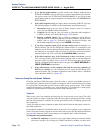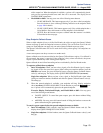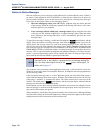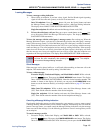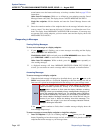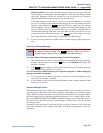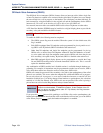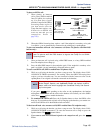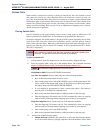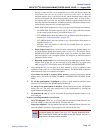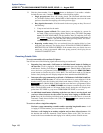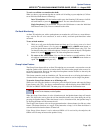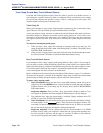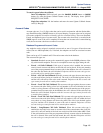
System Features
INTER-TEL
®
CS-5200/5400 ADMINISTRATOR GUIDE, ISSUE 1.1 – August 2005
Page 184 Off-Hook Voice Announce (OHVA)
Off-Hook Voice Announce (OHVA)
The Off-Hook Voice Announce (OHVA) feature allows an intercom caller (either single line
or Inter-Tel phone) to establish voice contact with the called Inter-Tel phone user, even though
the user already has a call in progress on the handset. The called party can then talk freely on
both connections, using the handset for the original call and the speakerphone for the OHVA
intercom call. The caller on the handset call will be able to hear the OHVA call.
In a network, intercom callers can establish OHVA calls to Inter-Tel phones on other nodes.
A PC Data Port Module (PCDPM) must be installed on a digital display phone to provide the
secondary voice path needed for the OHVA feature.
To enable the OHVA, the following must be completed:
• The OHVA system flag must be enabled. When the system is in the default state, this
flag is enabled.
• Each OHVA-equipped Inter-Tel endpoint can be programmed for placing and/or receiv-
ing OHVA calls. By default, OHVA is disabled at the station level.
• Other Inter-Tel endpoints and single line endpoints can be programmed for placing
OHVA calls, as desired. Inter-Tel endpoints without PC Data Port Modules or second-
ary voice paths, and single line endpoints cannot receive OHVA calls since they do not
have secondary voice path circuitry. By default, OHVA is disabled at the station level.
• Mini-DSS-equipped digital display phones can be programmed to override the Camp
On and OHVA Screening timers and make Immediate OHVA calls. This is a useful
option for Attendant stations.
Any combination of OHVA-enabled and -disabled stations is available through database pro-
gramming. For example, all Attendants may be programmed to make, but not receive, OHVA
calls, while other stations are allowed to receive, but not place, OHVA calls.
OHVA calls cannot be processed if the secondary voice path or the speakerphone of the called
phone is not available. This occurs when the endpoint has a different OHVA call in progress,
has an active data call in progress, is on an active handsfree intercom or outside call, has
handsfree disabled, has a call being changed from handset to speakerphone, has a headset
enabled, or is in Do-Not-Disturb. Also, OHVA calls are not possible if the caller is placing a
private intercom call or has the Ring Intercom Always feature enabled.
If you press the button while speaking to an OVHA caller on the speakerphone, the
handset microphone will be muted and the caller on the handset will not hear you or the OHVA
caller. When you press again, the handset microphone is re-enabled.
NOTE IP and SIP phones do not support OHVA.
IMPORTANT
To place an OHVA call using a single line phone, the Ring Intercom Always
feature must be disabled. To disable this feature, lift the handset of the sin-
gle line phone and dial feature code 377. By default, the Ring Intercom
Always feature is enabled.
MUTE
MUTE





